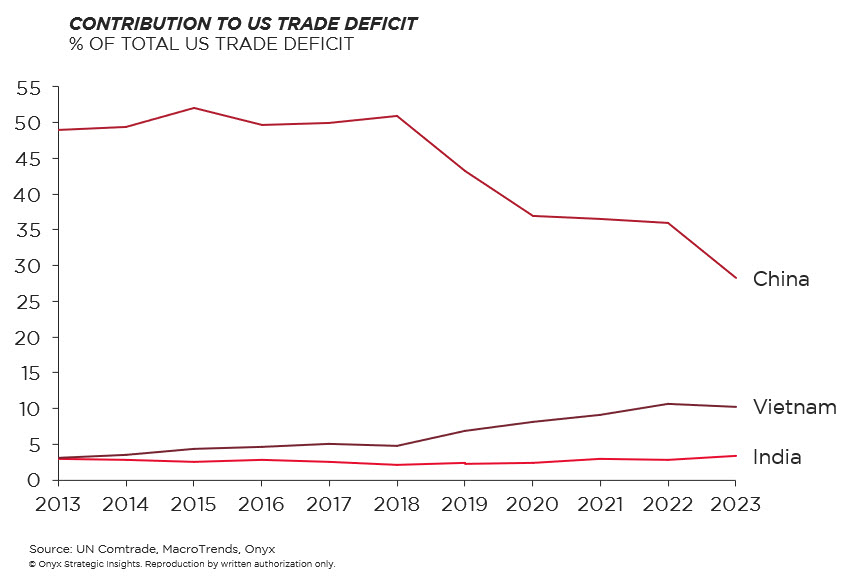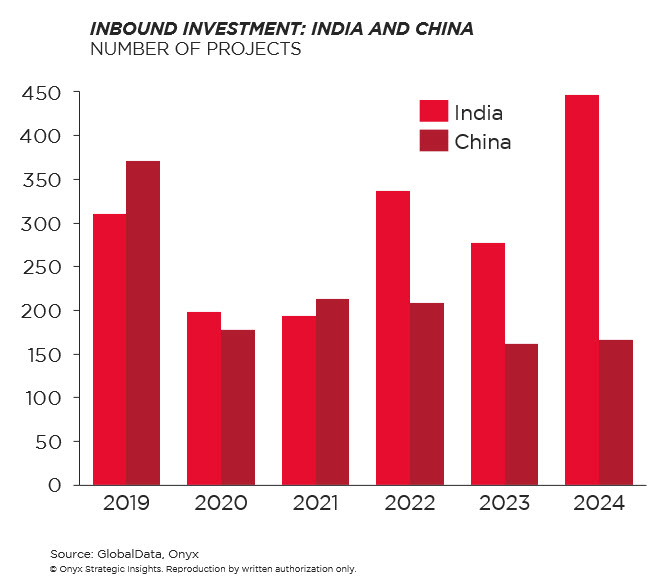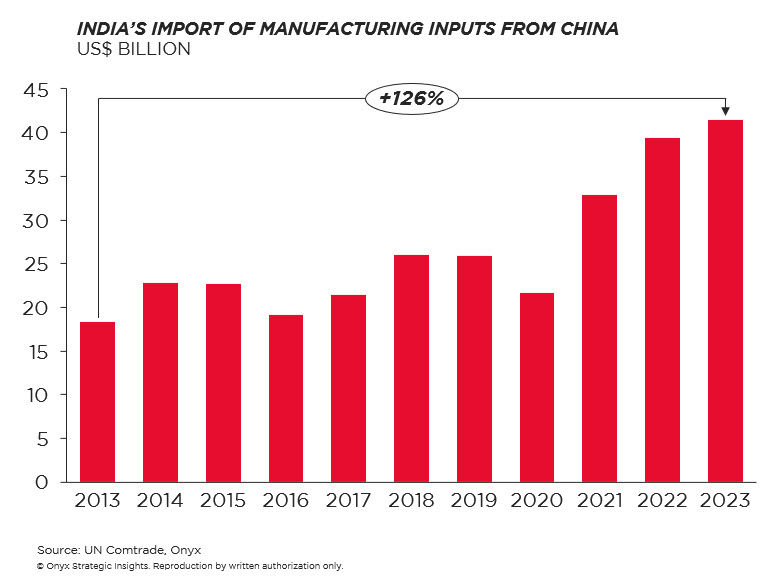
Search our articles
Will India be affected by Trump tariff policies?

Key Insights:
- What is happening: India faces the potential impact of broad US tariffs ranging from 10-20%; however, this country is unlikely to face aggressive US tariff measures, as it remains less integrated into US supply chains than China, as evidenced by its relatively small contribution to the US trade deficit.
- Why it matters: India is emerging as a key alternative for businesses’ supply chain diversification, supported by government efforts to boost manufacturing, but challenges remain for businesses to navigate, such as bureaucratic inefficiencies. Reliance on Chinese inputs also poses significant risks.
- What happens next: India is proactively addressing trade concerns with the US by proposing tariff reductions on select goods and increasing imports of LNG and defense equipment to reduce trade imbalances and strengthen economic ties.
ANALYSIS
India’s position in Trump’s trade policies
India’s trade relationship with the US is characterized by a relatively modest contribution to the US trade deficit. Unlike China and Vietnam, which are deeply embedded in US supply chains, India’s integration is less pronounced. This distinction may shield India from being a primary target of punitive tariffs, as the Trump administration’s focus has traditionally been on countries with substantial trade imbalances with the US.
Data comparing contributions to the US trade deficit reveal stark contrasts. China and Vietnam account for significant shares, while India’s proportion is considerably lower. This dynamic underscores why India might escape the brunt of aggressive tariff measures.

India's role in the global supply chain is poised to grow, but businesses must navigate certain challenges
Before the COVID-19 pandemic, foreign direct investment (FDI) in manufacturing predominantly favored China, thanks to its well-established infrastructure and streamlined regulatory environment. However, since 2020, India has surpassed China in attracting manufacturing FDI. The ongoing escalation of U.S. tariffs on China is likely to further redirect investment flows toward India.

Companies have been diversifying their supply chain networks away from China, with India emerging as one of the key alternatives. The Indian government has prioritized manufacturing as a central policy focus, striving to position the country as a competitive option for global businesses seeking to diversify. However, significant challenges remain for businesses to navigate, including bureaucratic inefficiencies and India’s dependence on Chinese inputs for its exports. For example, in the manufacturing sector, Chinese components are essential to India’s production, exposing the country to vulnerabilities amid shifts in trade policies.

What’s next?
In anticipation of potential trade frictions, India is proactively engaging with the US to address trade concerns. Key measures include:
- Tariff reductions: India has proposed lowering tariffs on select US goods, including farm products, high-end medical devices such as pacemakers, and luxury motorcycles, including Harley Davidson. These measures aim to foster goodwill and reduce trade imbalances.
- Increased imports from the US: Indian officials have suggested increasing purchases of LNG and defense equipment. These moves not only align with Trump’s emphasis on narrowing trade deficits but also deepen bilateral economic ties.
Topics: South Asia, North America, Trade

Written by Onyx Strategic Insights

